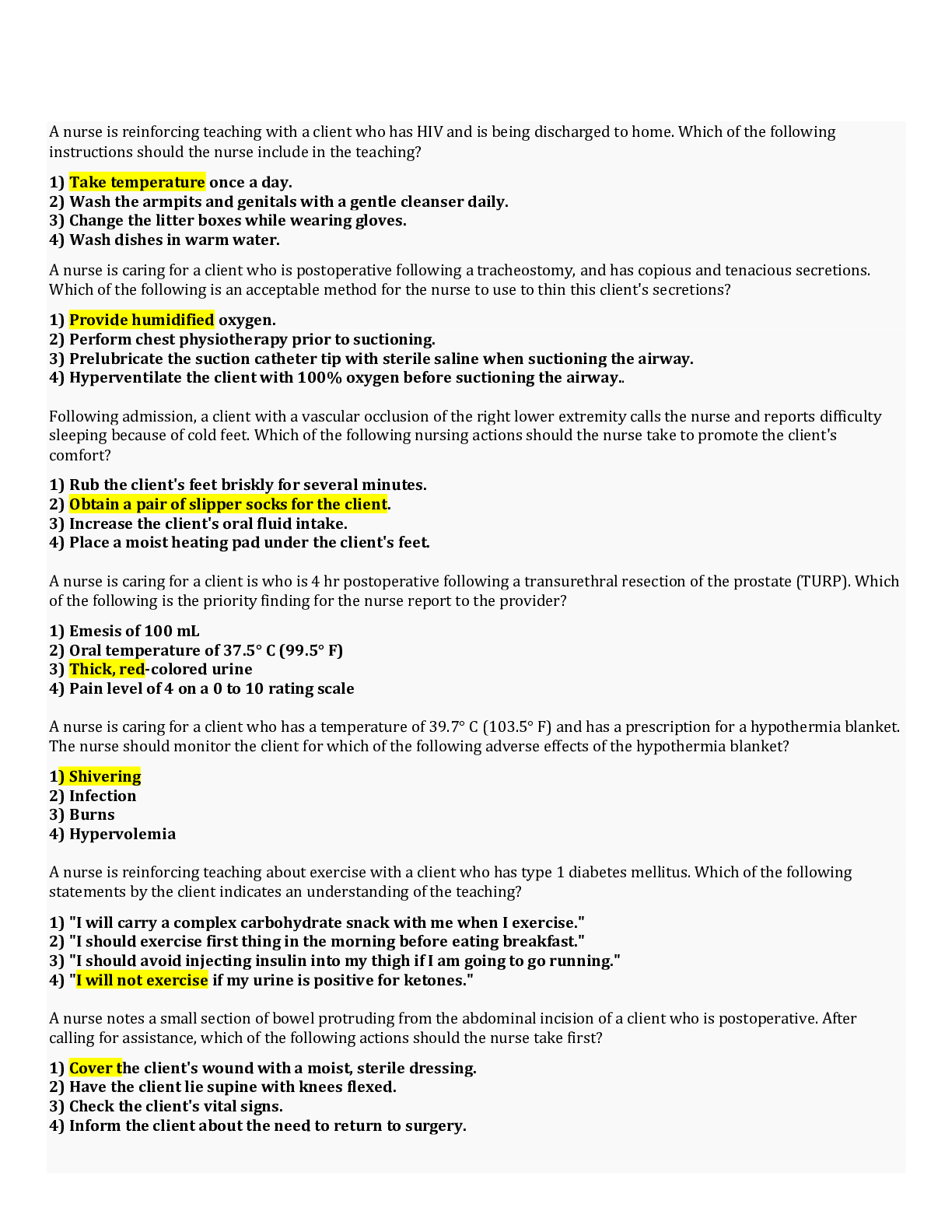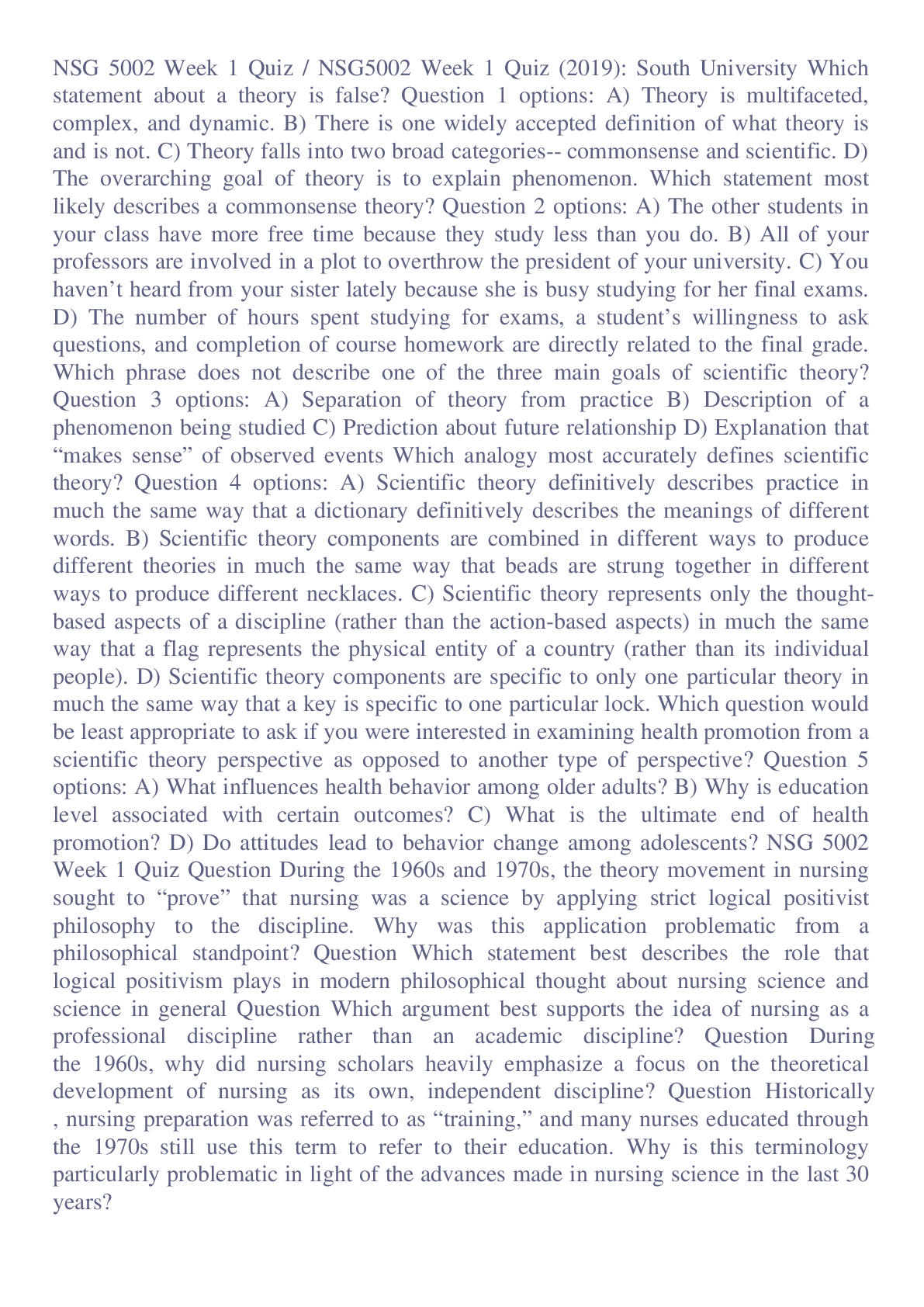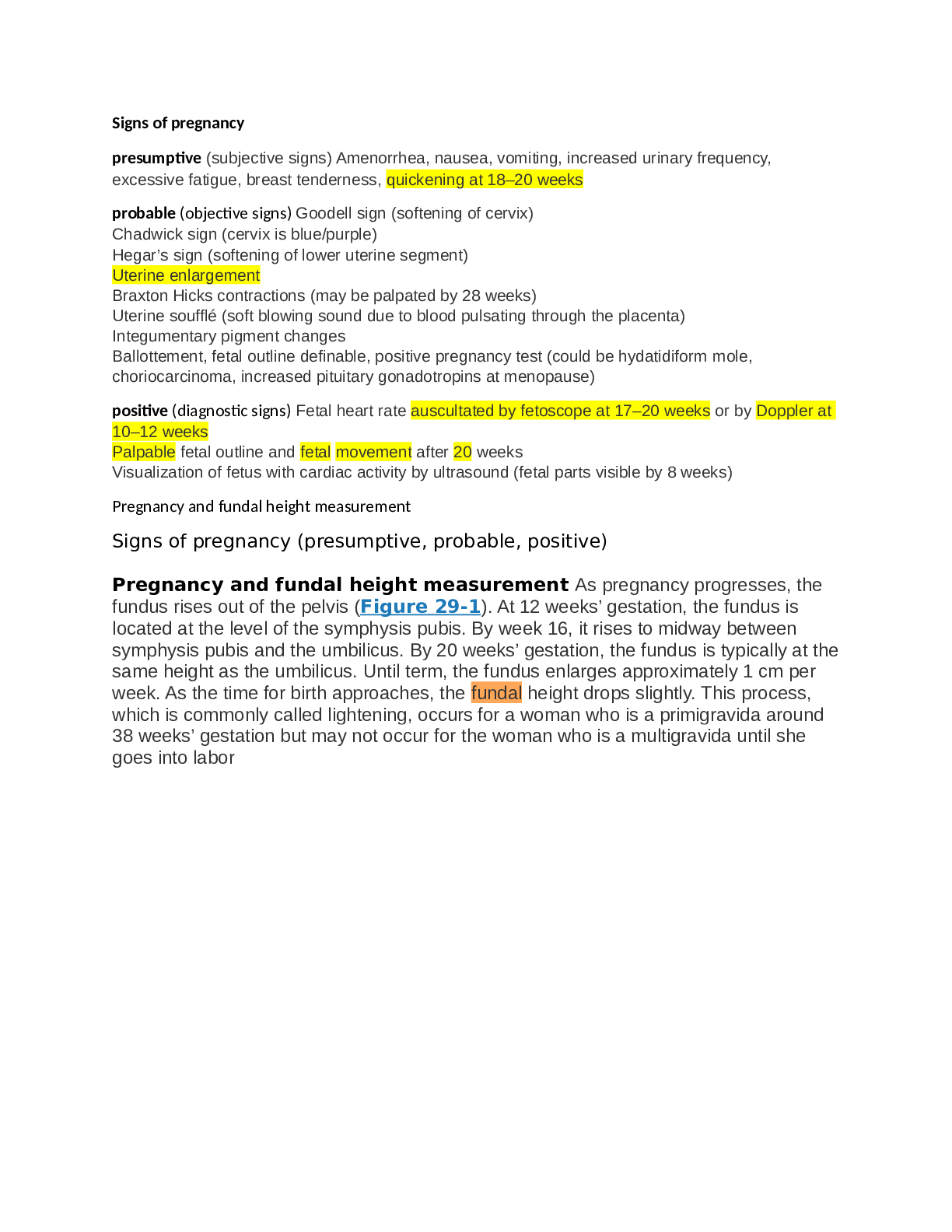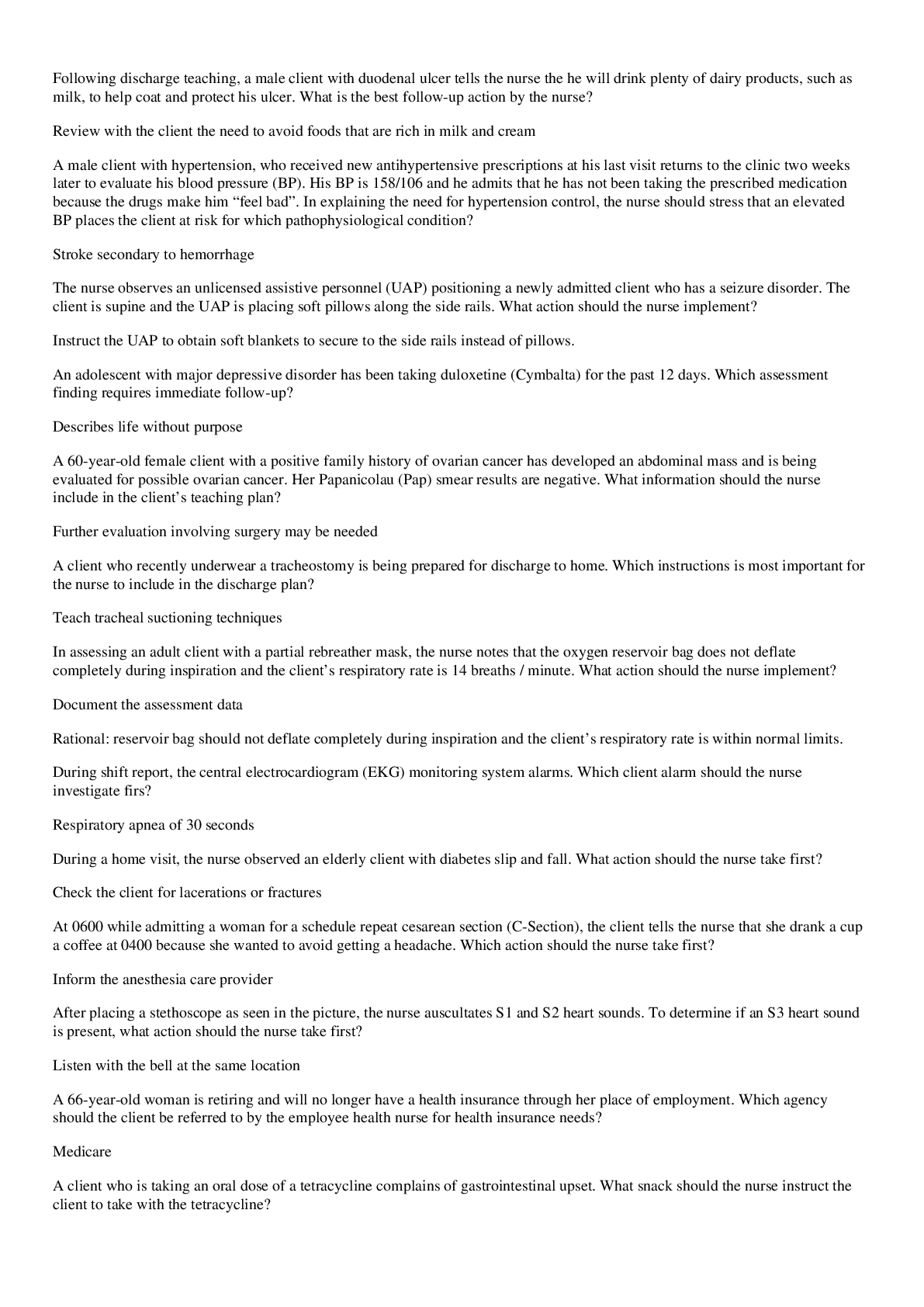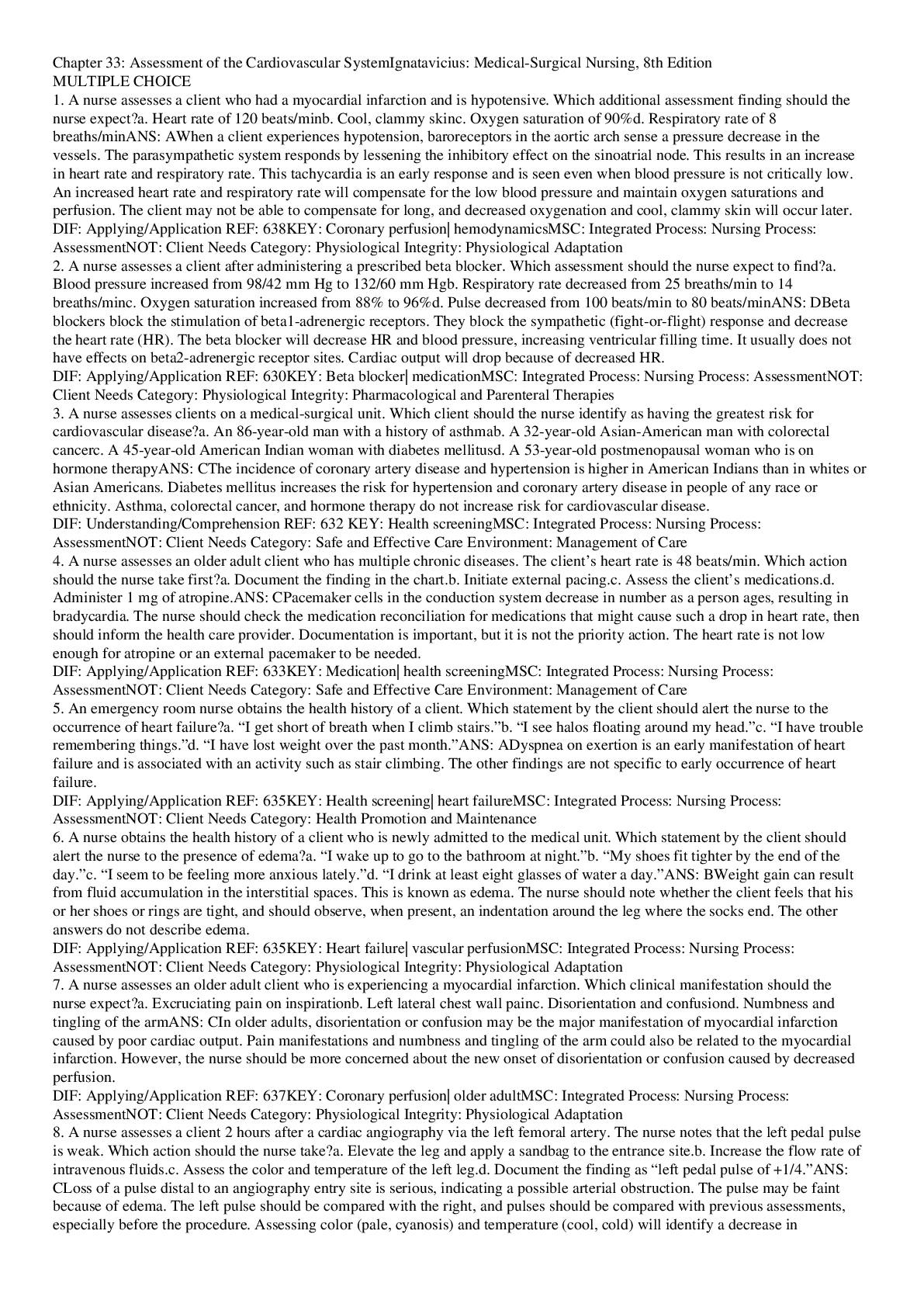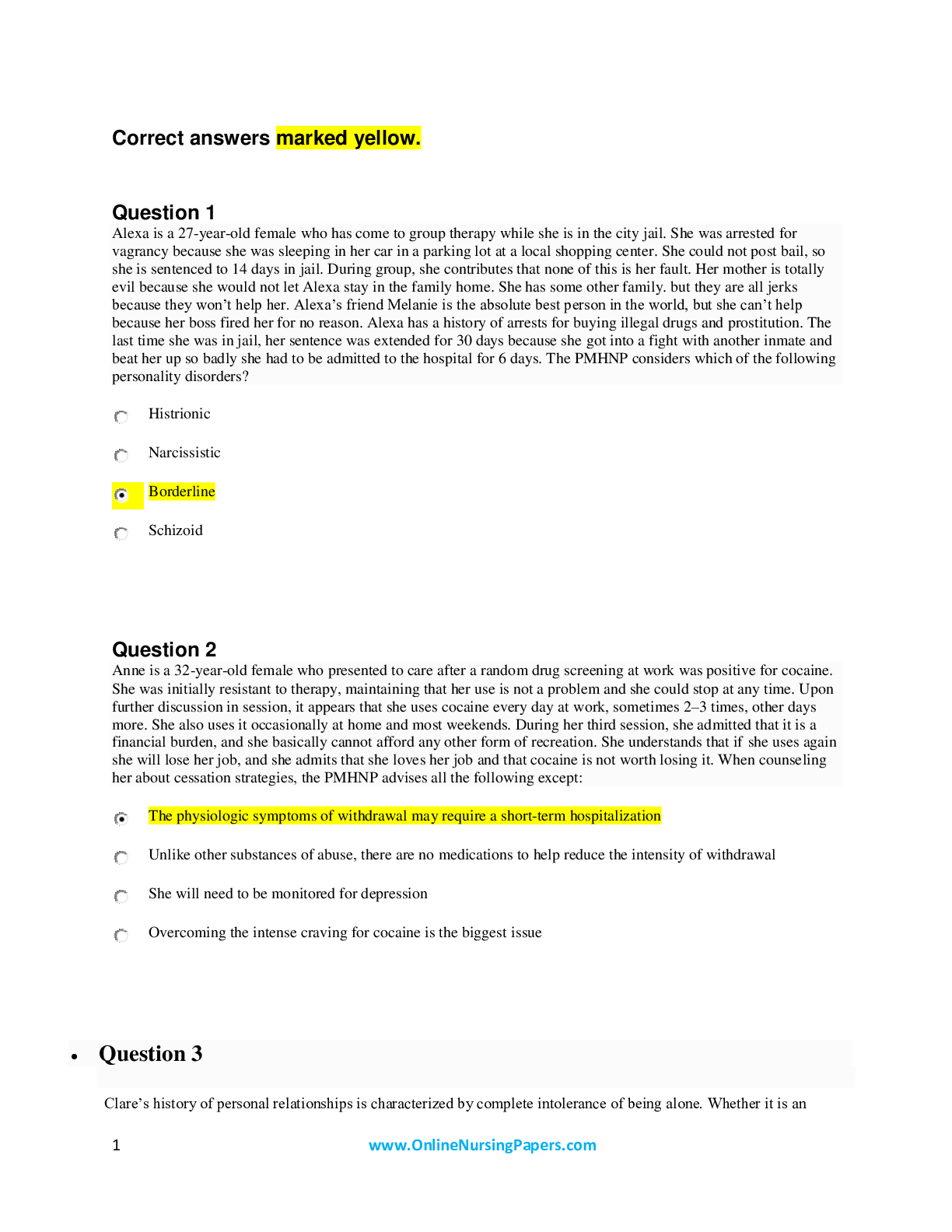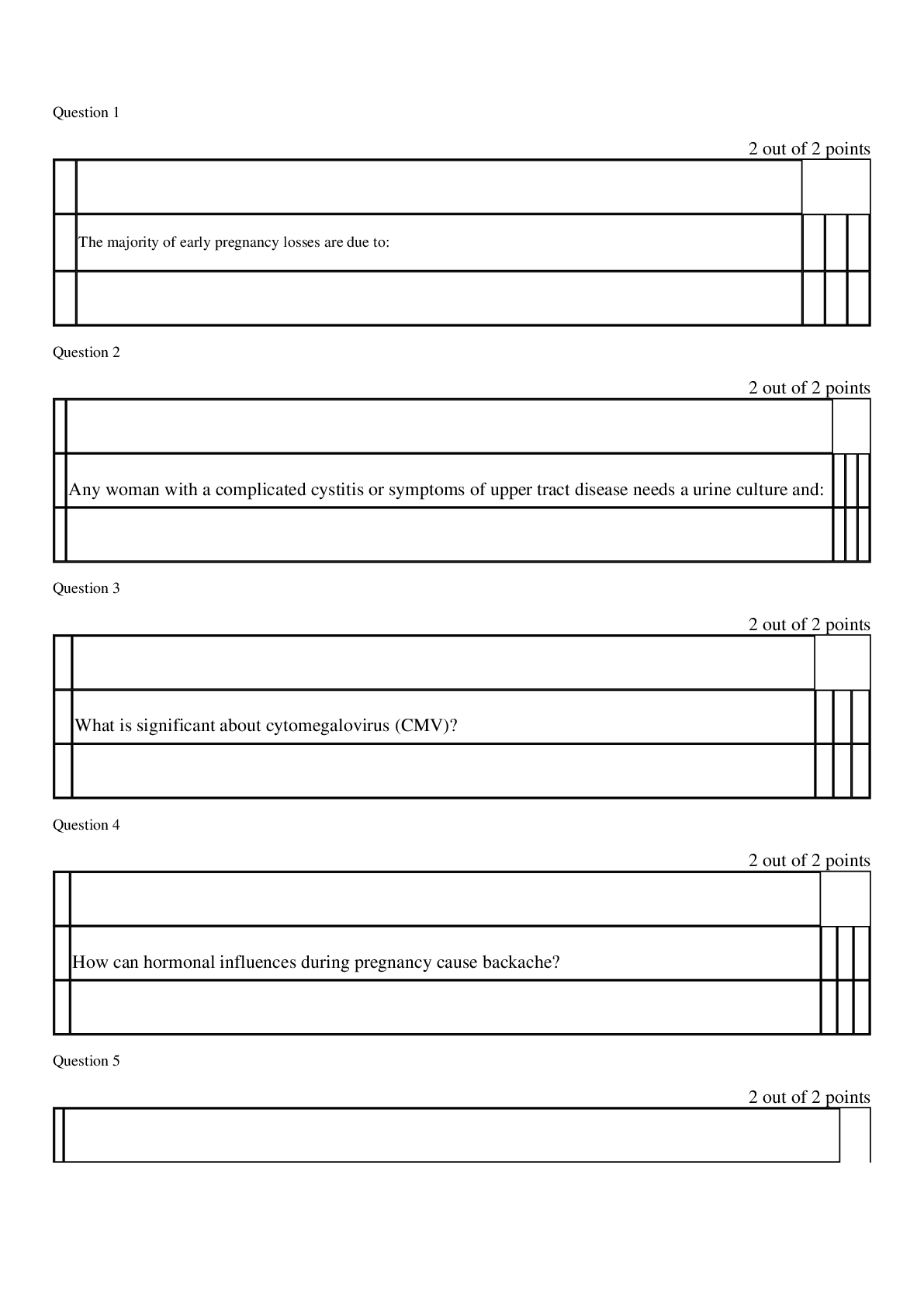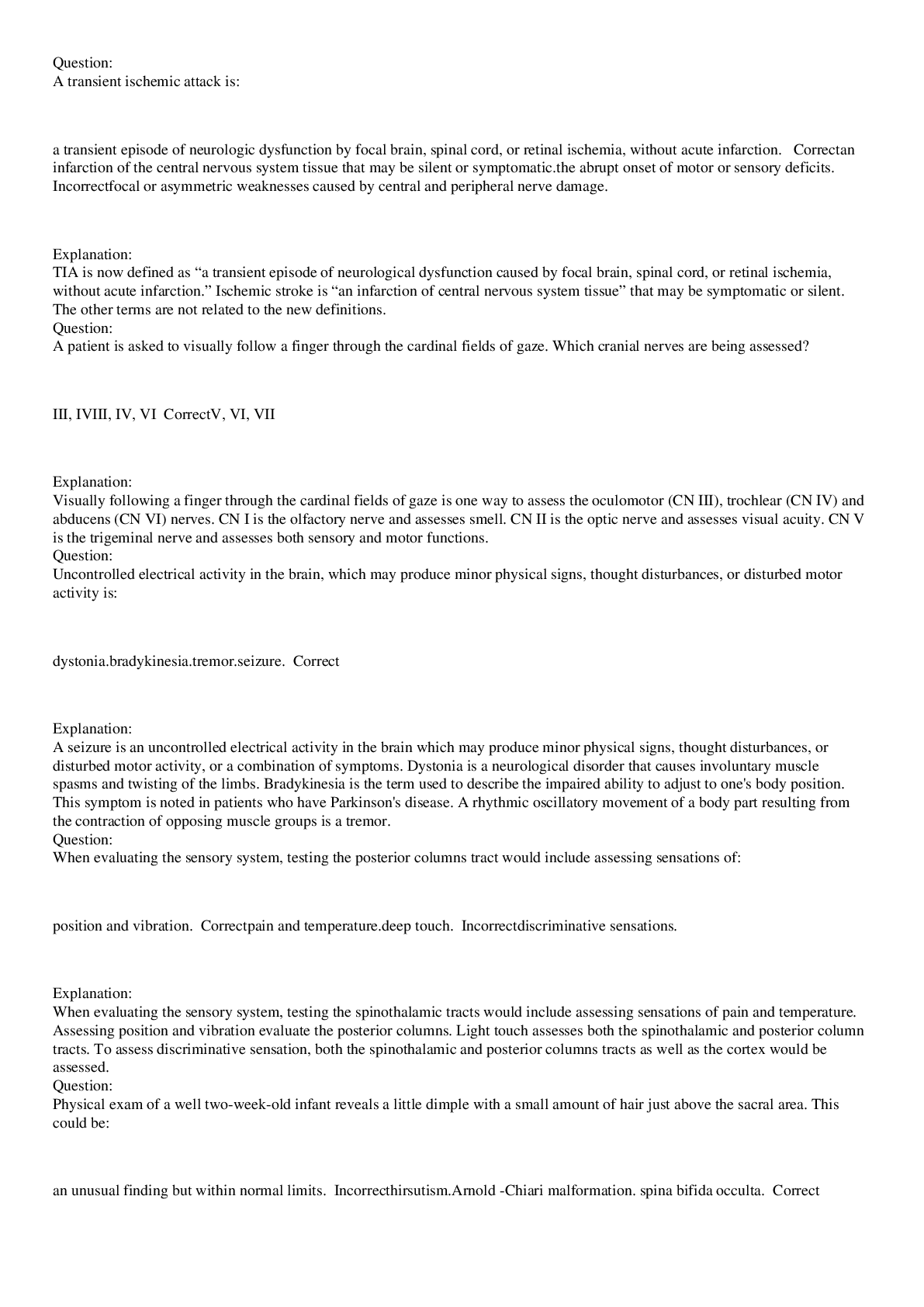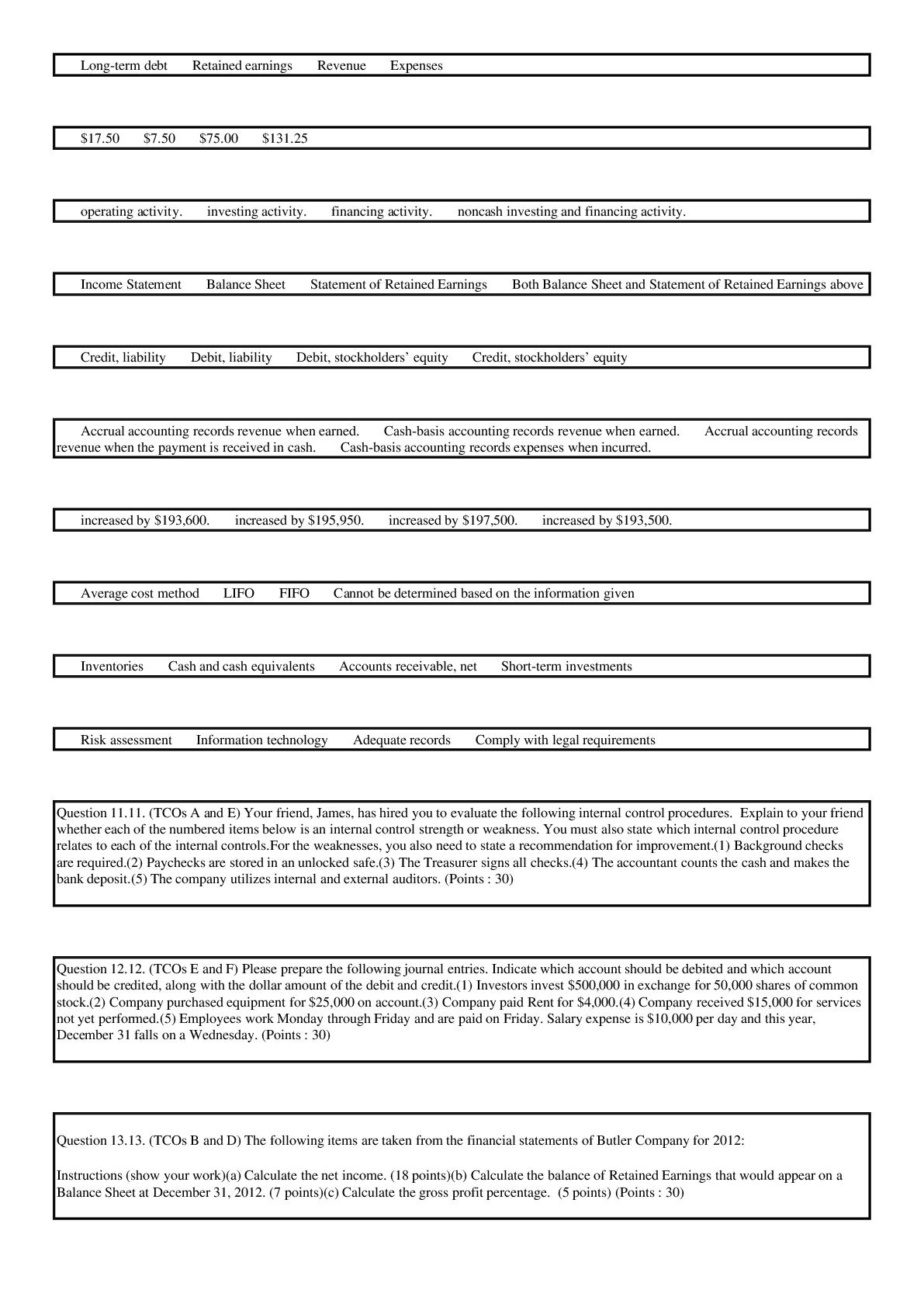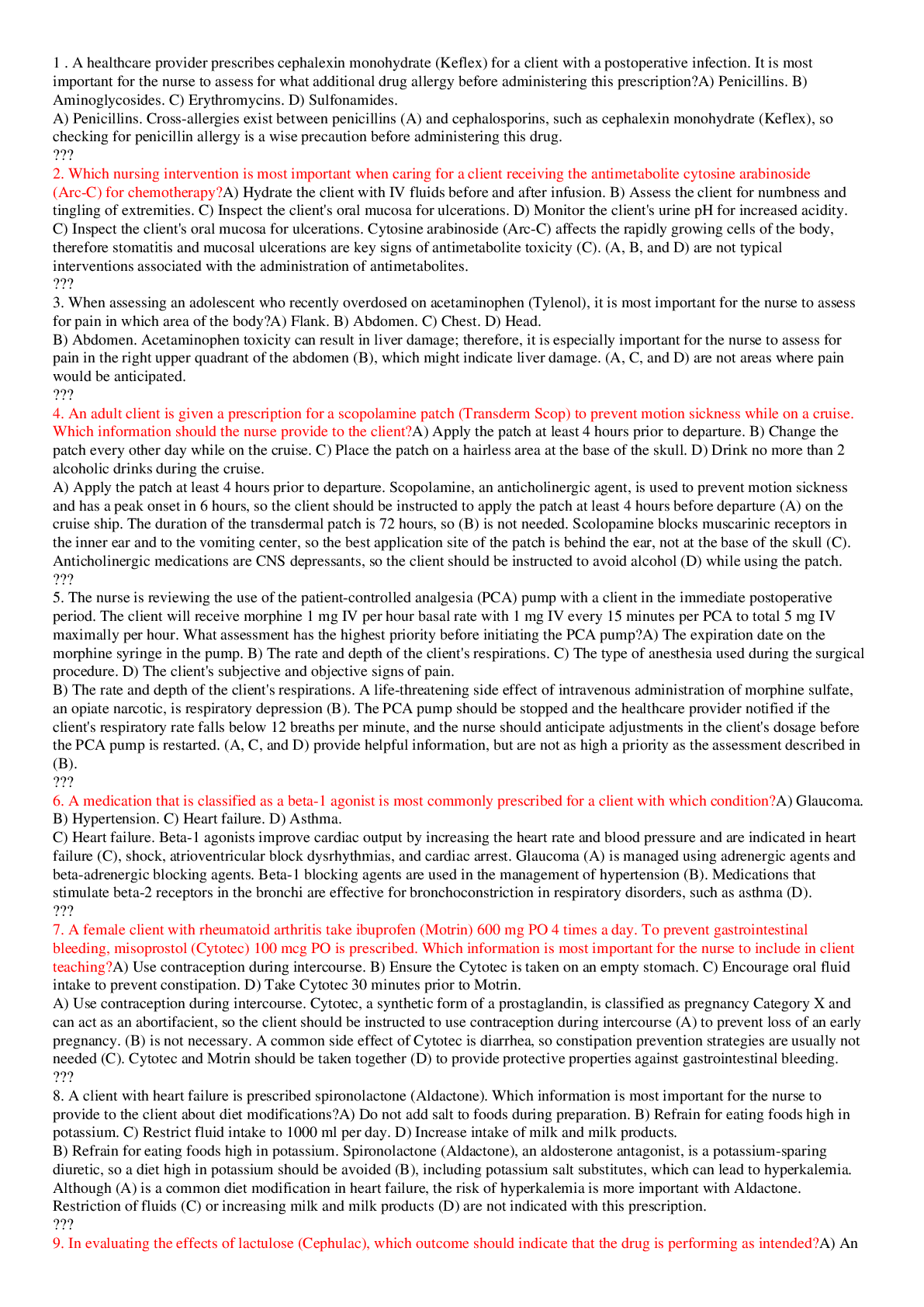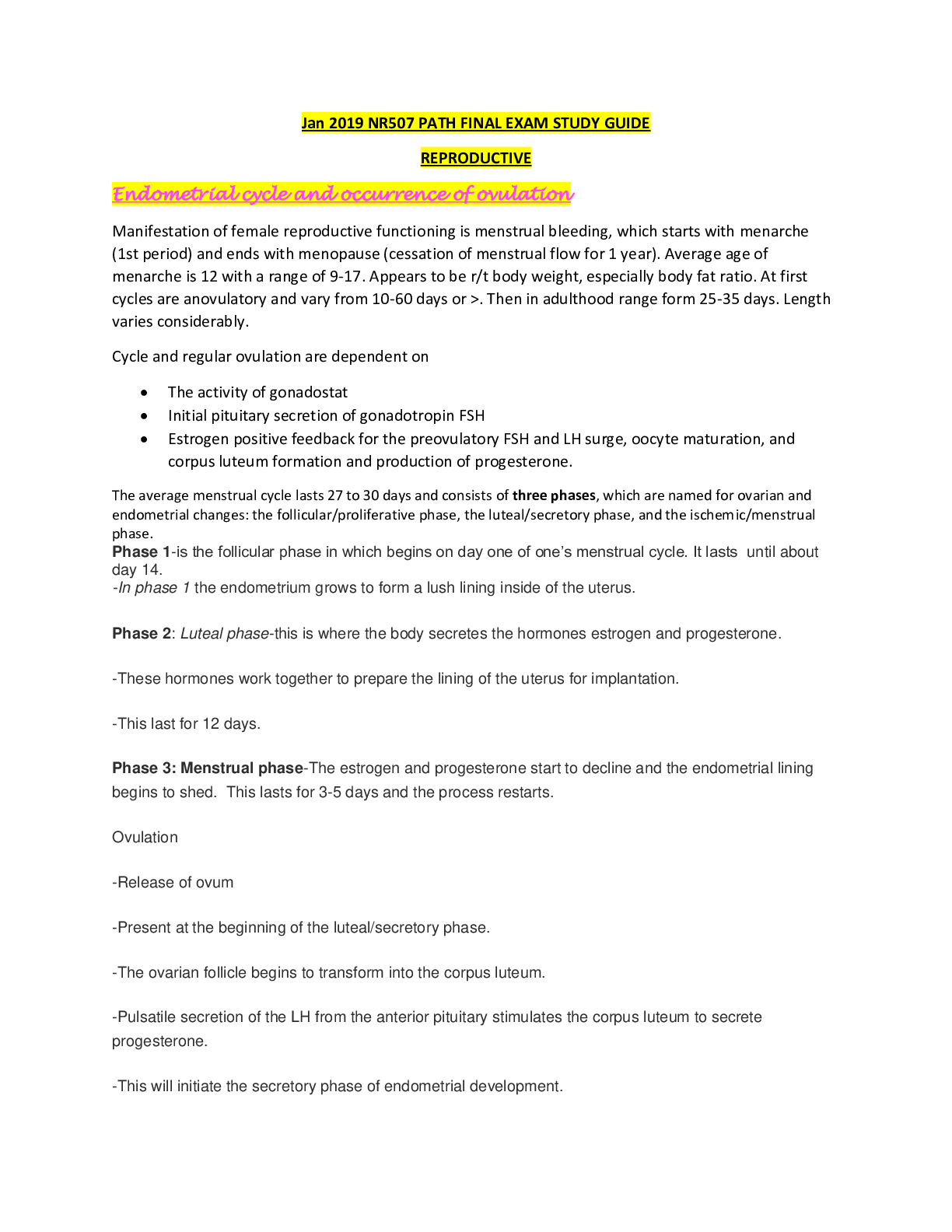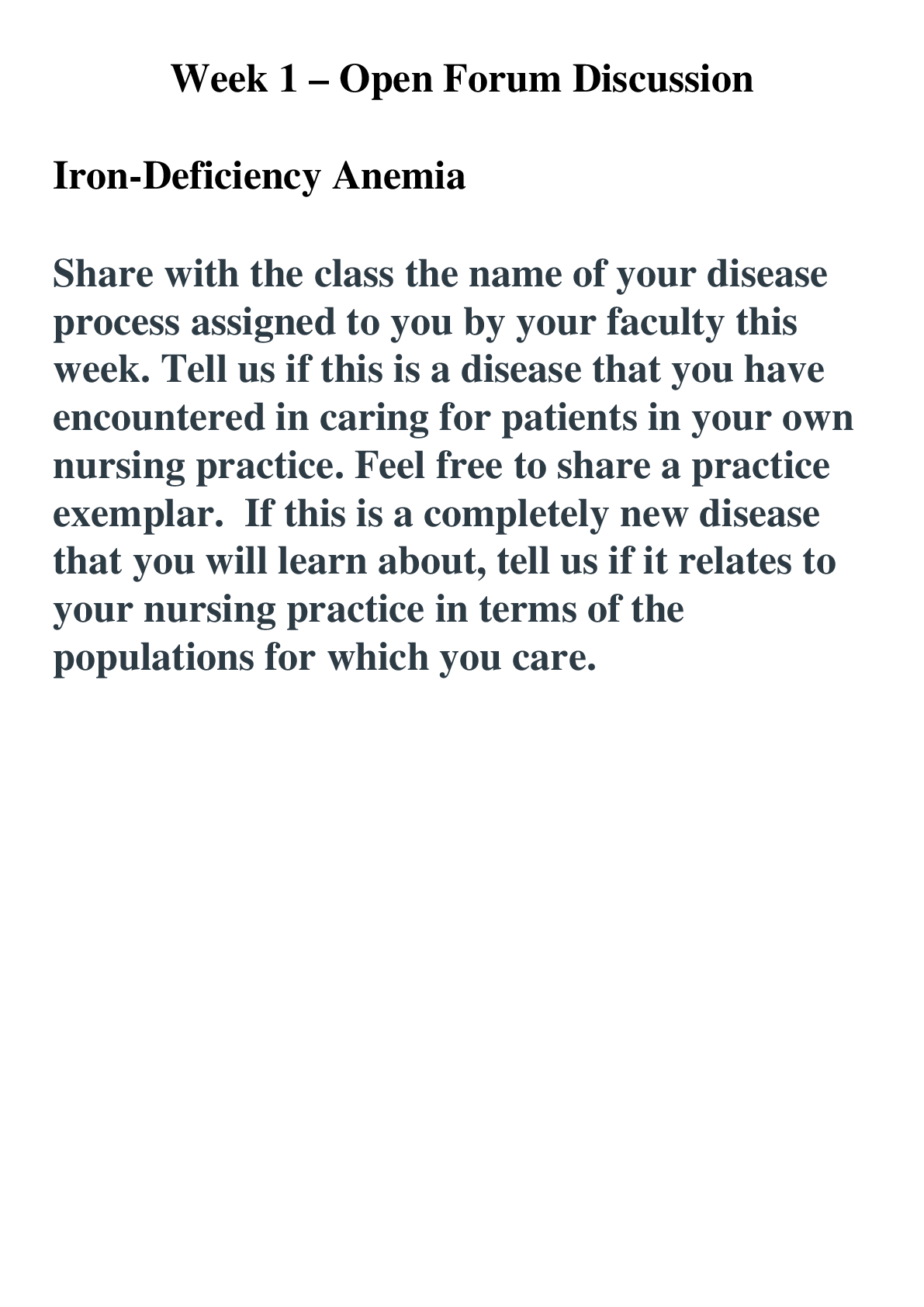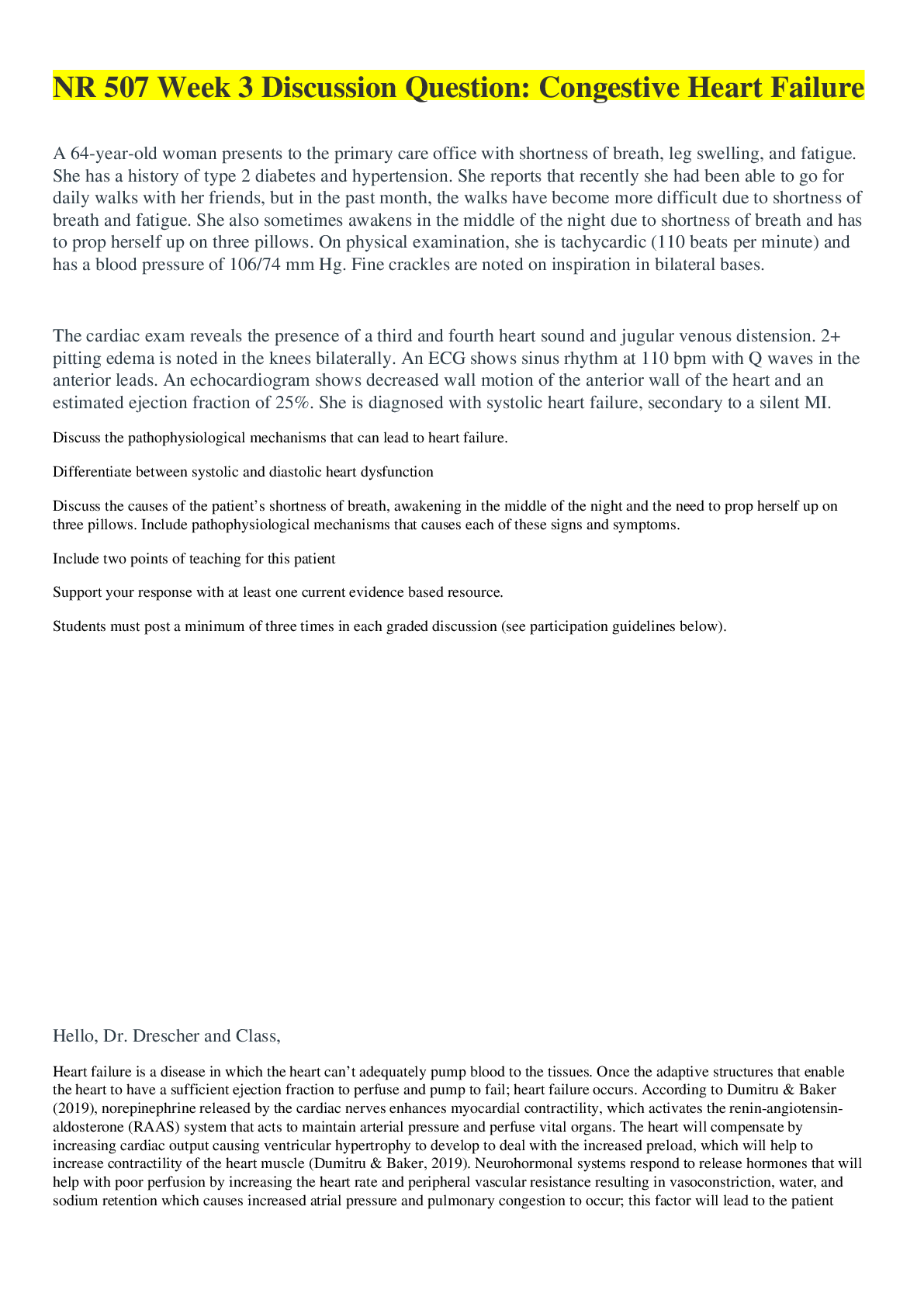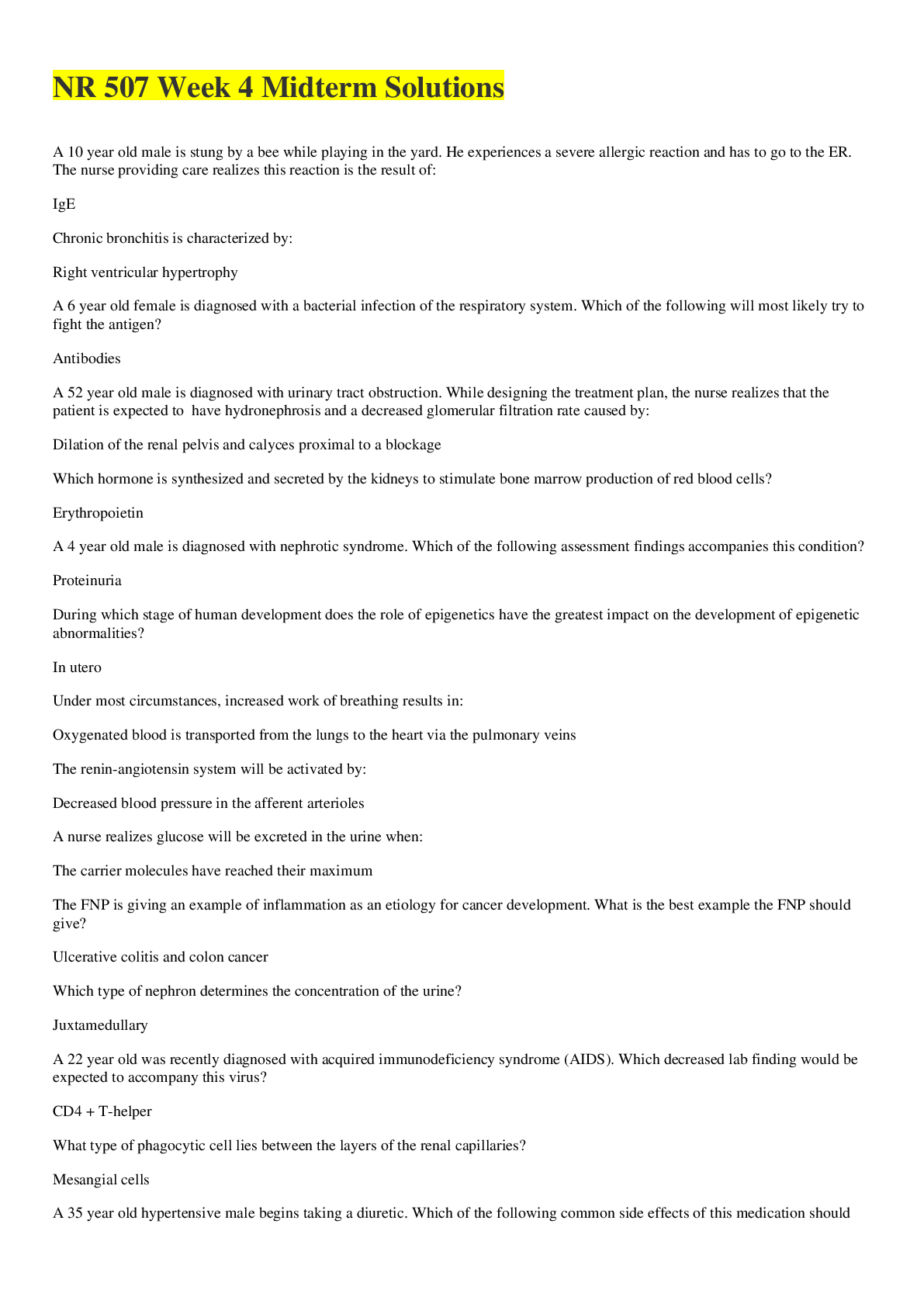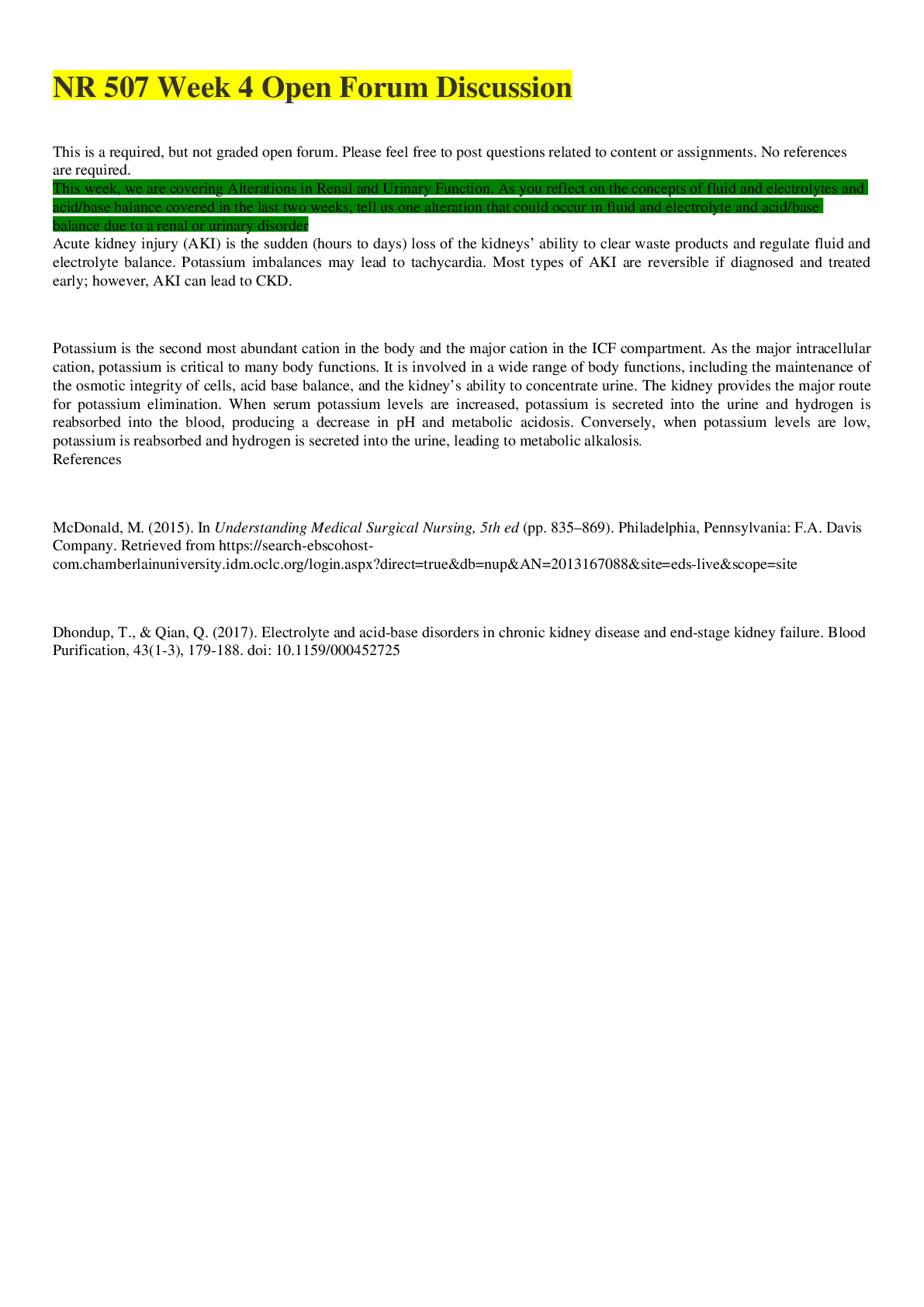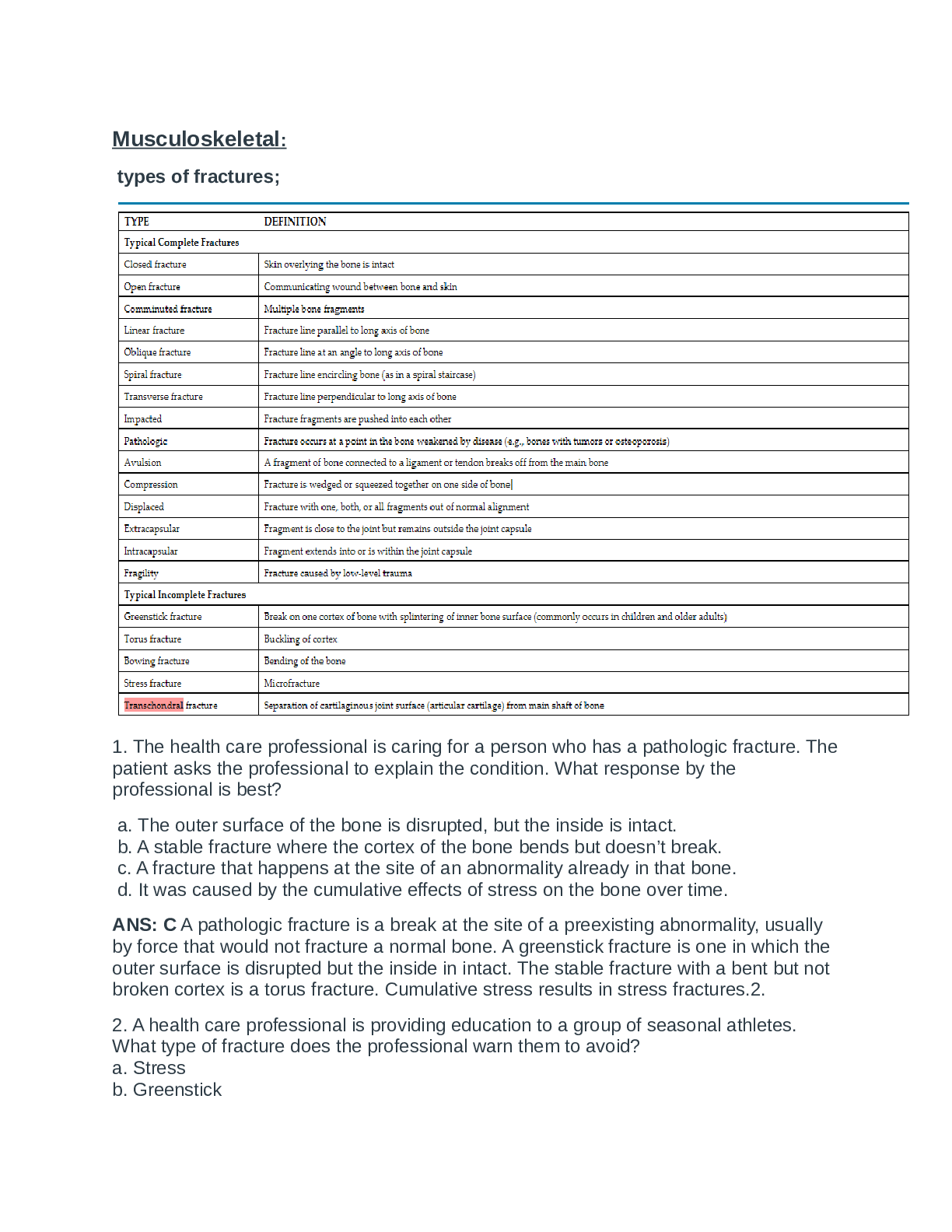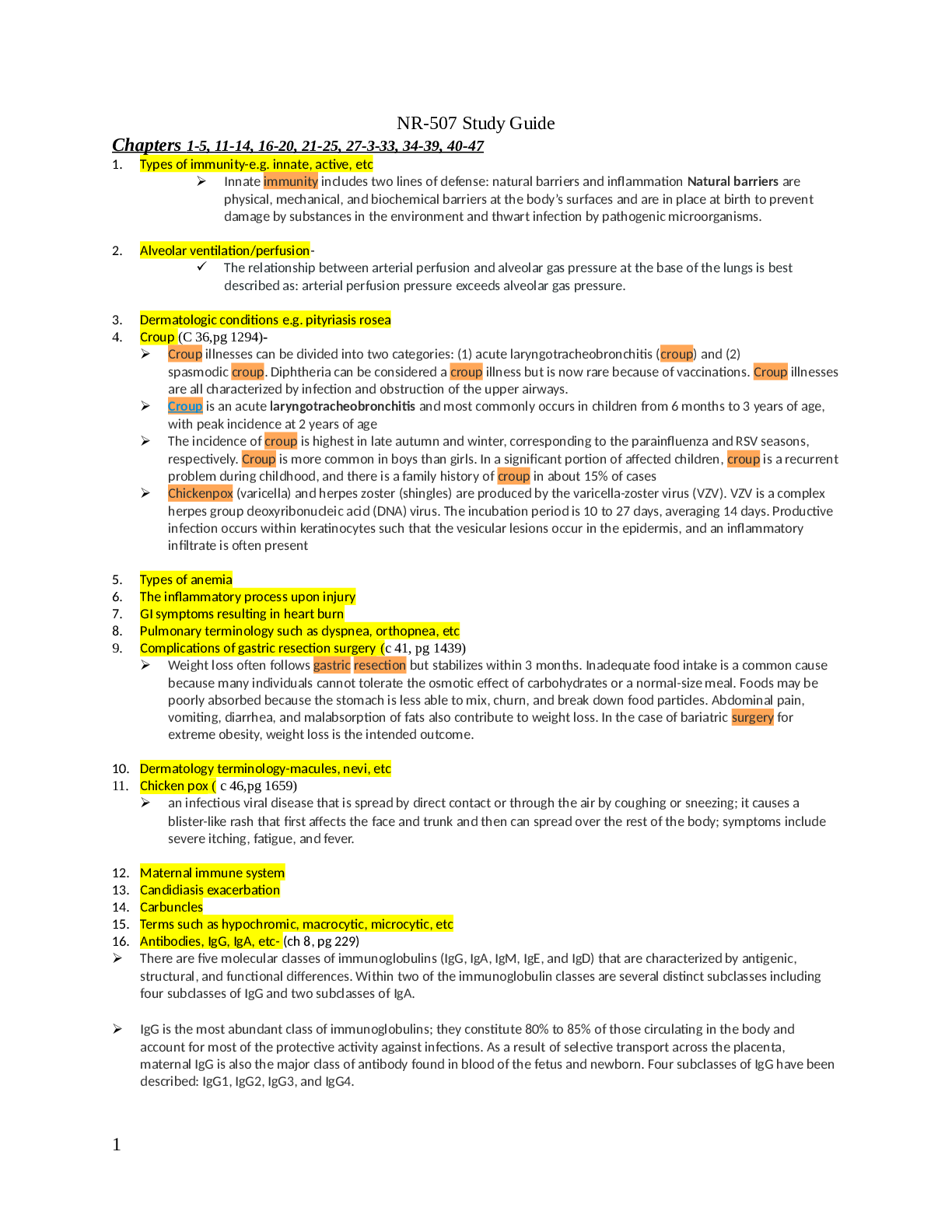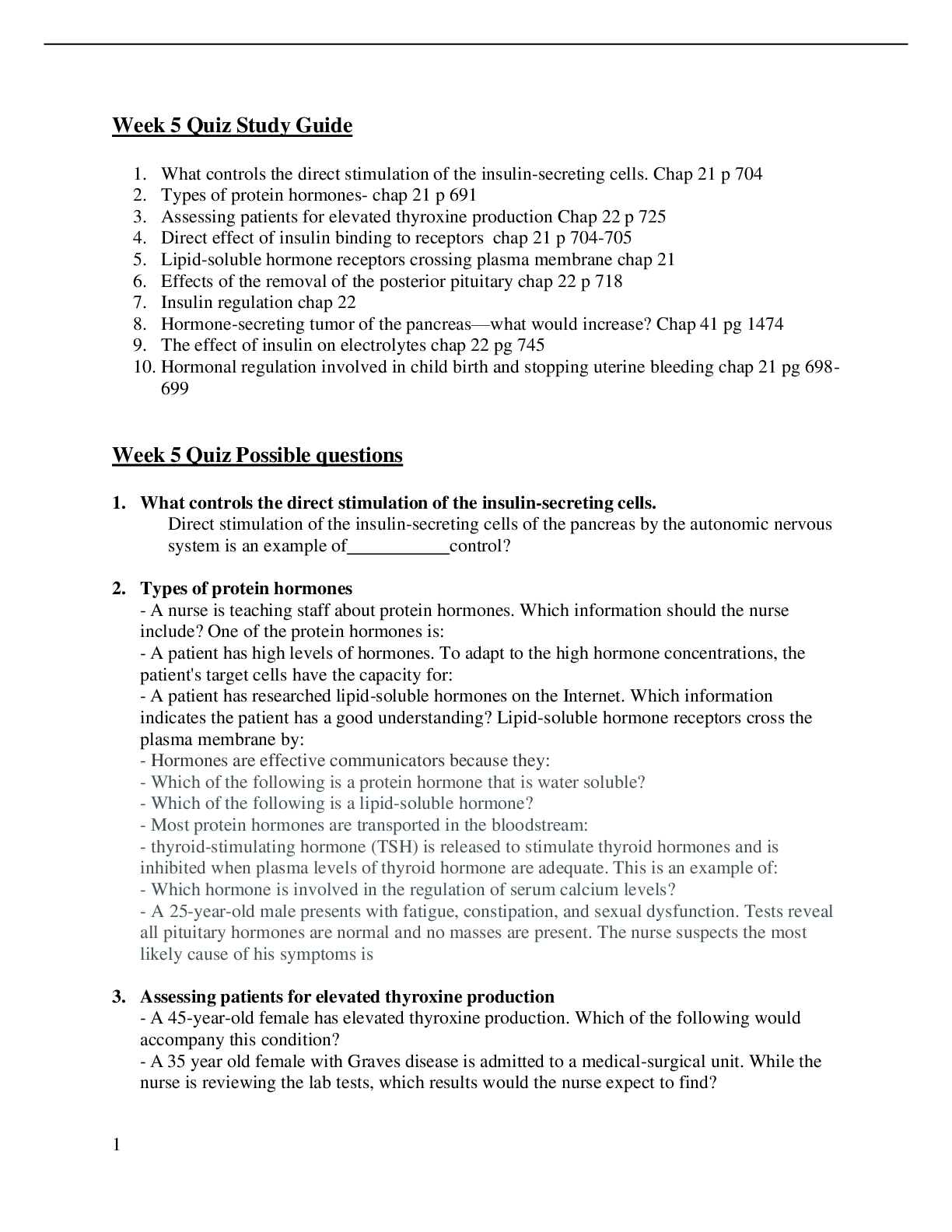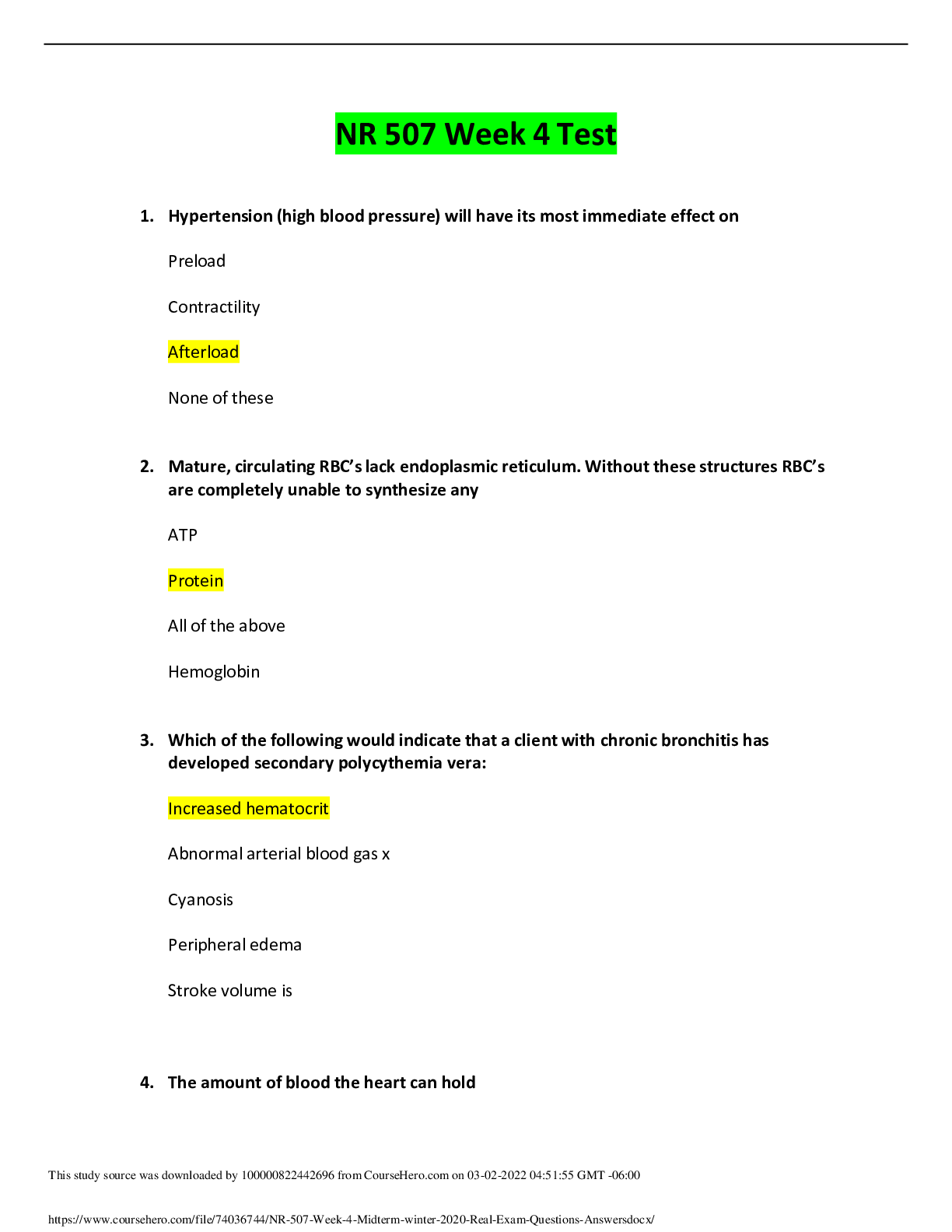*NURSING > STUDY GUIDE > Nursing - NR 507 Week 6 Quiz Study Guide Chapter 43,44,45,46,47; Dislocation and Subluxation. (All)
Nursing - NR 507 Week 6 Quiz Study Guide Chapter 43,44,45,46,47; Dislocation and Subluxation.
Document Content and Description Below
1. Terms related to fracture-ex dislocation, subluxation Dislocation and subluxation are usually caused by trauma but can also be due to ligamentous laxity, nerve injury, rheumatoid disease, or ... genetic problems. Dislocation is the temporary displacement of a bone from its normal position in a joint. If a dislocation does not involve a fracture, it is considered a simple dislocation; if there is an associated fracture, it becomes a complex dislocation. If the contact between the two joint surfaces is only partially lost, the injury is called a subluxation. Dislocation and subluxation are most common in persons younger than 20 years and are generally associated with fractures. Dislocation and subluxation, however, may result from congenital or acquired disorders that cause (1) muscular imbalance, as occurs with congenital hip dislocation or neurologic disorders; (2) incongruities in the articulating surfaces of the bones, such as with rheumatoid arthritis (see ; or (3) joint instability 2. Types of fracture Typical Complete Fractures Closed fracture -The skin overlying the bone is intact Open fracture- Communicating wound between bone and skin Comminuted fracture- Multiple bone fragments Linear fracture- Fracture line parallel to long axis of bone Oblique fracture- Fracture line at an angle to long axis of bone Spiral fracture- Fracture line encircling bone (as a spiral staircase) Transverse fracture- Fracture line perpendicular to long axis of bone Impacted- Fracture fragments are pushed into each other Pathologic- Fracture occurs at a point in the bone weakened by disease (e.g., bones with tumors or osteoporosis) Avulsion- A fragment of bone connected to a ligament or tendon breaks off from the main bone Compression- Fracture is wedged or squeezed together on one side of bone Displaced- Fracture with one, both, or all fragments out of normal alignment Extracapsular- Fragment is close to the joint but remains outside the joint capsule Intracapsular- Fragment extends into or is within the joint capsule Fragility- Fracture caused by low-level trauma Typical Incomplete Fractures Greenstick fracture- Break on one cortex of bone with splintering of inner bone surface (commonly occurs in children and older adults) Torus fracture- Buckling of cortex Bowing fracture- Bending of the bone Stress fracture- Micro fracture Transchondral fracture- Separation of cartilaginous joint surface (articular cartilage) from main shaft of bone Terms: 3. Transchondral fractures Separation of cartilaginous joint surface (articular cartilage) from main shaft of bone 4. Dislocaction- Dislocation and subluxation are usually caused by trauma but can also be due to ligamentous laxity, nerve injury, rheumatoid disease, or genetic problems. Dislocation is the temporary displacement of a bone from its normal position in a joint. If a dislocation does not involve a fracture, it is considered a simple dislocation; if there is an associated fracture, it becomes a complex dislocation. If the contact between the two joint surfaces is only partially lost, the injury is called a subluxation. 5. Subluxation subluxation, however, may result from congenital or acquired disorders that cause (1) muscular imbalance, as occurs with congenital hip dislocation or neurologic disorders; (2) incongruities in the articulating surfaces of the bones, such as with rheumatoid arthritis or (3) joint instability. 6. Distortion- 2 Superficial damage results in a layer of dead tissue that appears as a blister, erosion, or nonblanchable red/darkened skin or as a reddish blue discoloration when there is deeper tissue damage. Superficial sores are more common on the sacrum as a result of shearing or friction forces (forces parallel to the skin). Deep sores develop closer to the bone as a result of tissue distortion and vascular occlusion from pressure that is perpendicular to the tissue (over the heels, trochanter, and ischia) 7. Nonunion- Splints and casts are used to immobilize and hold a reduction in place. Improper reduction or immobilization of a fractured bone may result in nonunion, delayed union, or malunion. Nonunion is failure of the bone ends to grow together. Treatment of delayed union and nonunion includes use of various modalities designed to stimulate new bone formation. Physical modalities, such as implantable or external electric current devices, electromagnetic field generations, and low-density ultrasound, have been effective in stimulating bone formation.Stem cells and gene therapy also show promise in promoting formation of new bone. Large defects in bone can be filled with bone graft or synthetic materials, such as calcium phosphate cement. 8. Periostitis Inflammation of outer membrane of bone (can be acute or chronic) 9. Muscle strain- Mild injury such as muscle strain is usually seen after traumatic or sports injuries. Muscle strain is a general term for local muscle damage. It is often the result of sudden, forced motion causing the muscle to become stretched beyond normal capacity. Strains often involve the tendon as well. Muscles are ruptured more often than tendons in young people; the opposite is true in older adults. Muscle strain may be chronic when the muscle is repeatedly stretched beyond its usual capacity. [Show More]
Last updated: 1 year ago
Preview 1 out of 10 pages
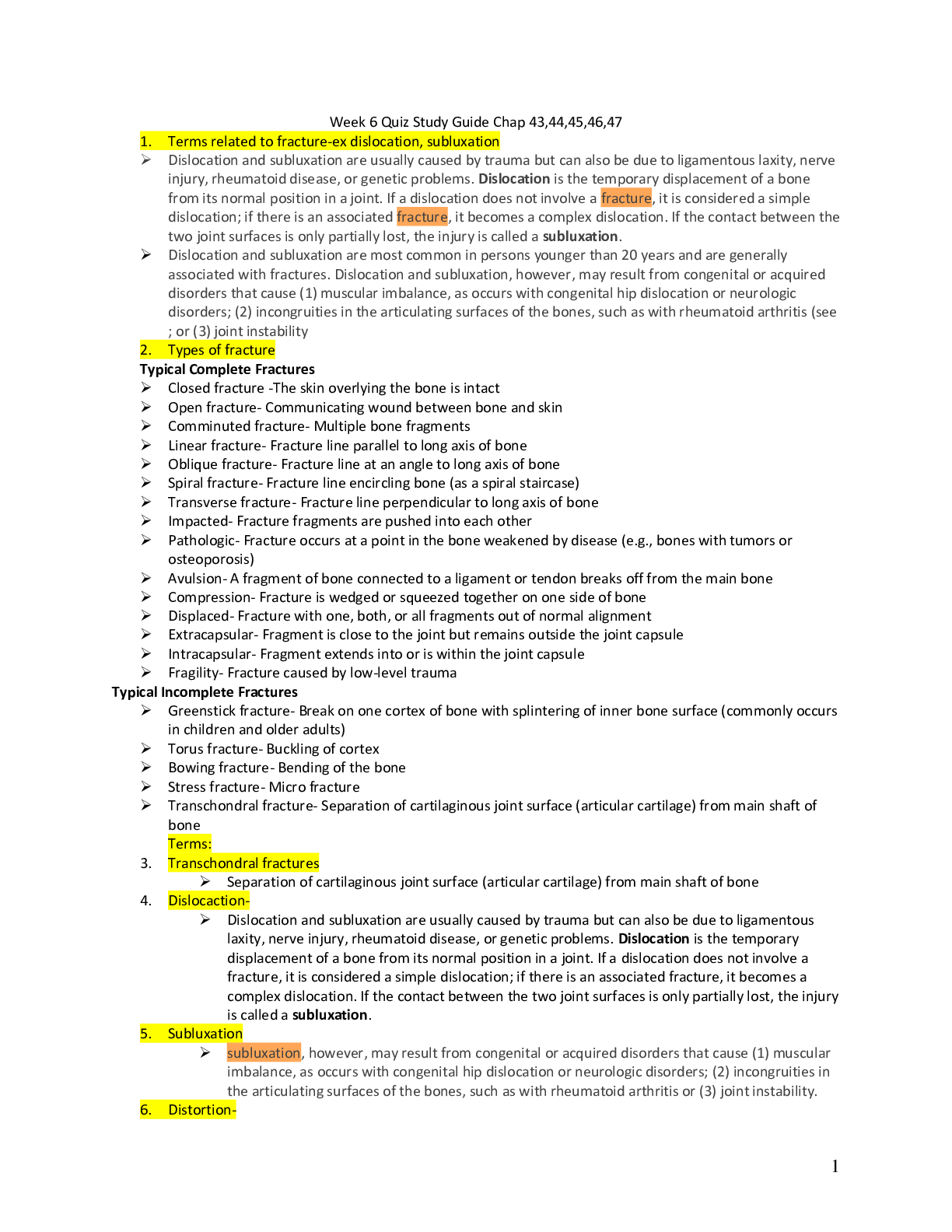
Reviews( 0 )
Document information
Connected school, study & course
About the document
Uploaded On
Oct 24, 2020
Number of pages
10
Written in
Additional information
This document has been written for:
Uploaded
Oct 24, 2020
Downloads
0
Views
87

